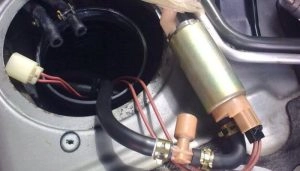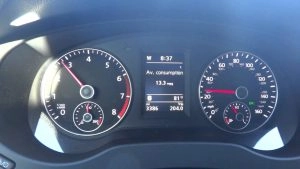Issues with reduced car torque are among the most common problems drivers face, and are experienced consistently all around the world.
Decreased torque refers to a loss of power and acceleration in the car, which negatively affects its performance. This problem usually requires repair, but it can be prevented if the causes are identified.
Causes of Car Torque Weakness Issues

Air filter pollution
The air filter works to purify the air that is drawn into the car's engine. If this filter becomes contaminated, it may prevent enough air from reaching the engine, leading to a loss of torque and acceleration.
2- Spark Plug Contamination
Spark plugs are important components of the combustion system in the engine, and they function to ignite the fuel. If the spark plugs become contaminated, it can lead to incomplete combustion of the fuel, resulting in loss of torque and acceleration.
3- Fuel Injector Contamination
The fuel injector works to distribute fuel to the engine in the right amount and in the correct way. If the fuel injector becomes contaminated, it may distribute fuel improperly, which can lead to problems with the car's torque weakness.
4- Air leakage in the exhaust system
Air passes through the exhaust system until it reaches the engine, and if air leaks into this system, it may alter the level of oxygen-containing air, leading to a loss of torque and acceleration.
5- Damage to the Thermal Scanner
The thermal scanner helps to heat the air that is drawn into the engine, and if the thermal scanner is damaged, it may prevent this necessary heating of the air, leading to a loss of torque and acceleration.
6- Fuel pump damage

The Fuel Pump is responsible for pumping fuel from the tank to the engine. If this pump breaks down or gets damaged, it can lead to insufficient fuel reaching the engine, which can result in problems with the car's performance.
7- Oxygen sensor damage
The oxygen sensor works to measure the proportion of oxygen in the exhaust. If this sensor is damaged, it may cause a malfunction in the combustion system of the car, leading to a loss of torque and acceleration.
8- Damage to the Positive Ventilation Valve
The positive ventilation valve works to expel harmful gases from inside the tires. If this valve malfunctions, it can lead to increased pressure inside the tires, which can result in loss of torque and acceleration.
9- Damage to the tire valve
The tire valve works to fill the tire with air, and if this valve is damaged, it may lead to air leakage from the tire, which can lead to issues with the car's torque weakness.
10- Gearbox damage
Automatic transmission engines work to convert the torque produced from the engine into rotational force for the tires. If the gearbox engine fails, this may lead to loss of torque and acceleration.
11- Exhaust Blockage
A clogged exhaust can cause gases to accumulate inside the engine, and if these gases are not properly discharged, it may lead to a loss of torque and acceleration.
12- Decrease in oil level
The engine requires an adequate amount of oil to function correctly, and if the oil level significantly drops, it could lead to engine damage and loss of torque and acceleration.
How can one avoid issues related to car torque weakness?

The torque of a car can be increased in several ways, including:
Installing a Turbocharger
The turbocharger compresses the air entering the engine, which increases the amount of oxygen available for combustion, thus boosting power and torque, and avoiding problems with reduced car torque.
2- Improve the exhaust system
The exhaust system can be enhanced by replacing the exhaust with larger sizes and using lighter materials, and by installing high-performance exhaust pipes. This helps to improve the engine performance and increase the torque.
3- Installation of larger front brakes.
The hydraulic brake system must be properly regulated and adjusted, and it's also necessary to correctly install the larger front brakes to avoid any impact on the overall engineering of the car.
Consideration should also be given to using lightweight brakes and ventilated brake discs, as they can be light and provide the necessary braking performance without adding extra weight.
Finally, consider installing an enhanced exhaust system for the car, as it can help improve torque and boost the car's overall performance.
All aspects of the car that may affect the torque and its overall performance should be considered before installing larger front brakes, ensuring that the car is properly optimized to avoid any problems with reduced torque.
4- Installing high-performance camshaft pulleys
Installing high-performance camshafts is a modification generally made to the engine to enhance performance and torque. Installing high-performance camshafts can help increase engine power and acceleration, but certain procedures must be followed to avoid any issues with vehicle torque weakness.
Firstly, it's essential to ensure that the camshaft pulleys being used are of high quality and meet industrial standards. These pulleys should be robust and made from high-quality materials to withstand the excess pressure and heat resulting from the engine's continuous operation.
Secondly, camshaft pulleys must be available in suitable conditions, and they should be properly installed in the engine. It is crucial to ensure that the pulleys are installed in the correct position and that the bolts have been tightened well to avoid any deviations or damage to the pulleys.
Consideration should also be given to modifying other parts of the engine to accommodate the installation of high-performance camshafts, and modifications to the exhaust system, fuel system, computer control system, and electrical connectors should also be considered to suit the installation of camshafts.
5- Change the air filter
The air filter can be replaced with a high-performance filter, which allows a larger amount of air to pass into the engine, increasing thrust and torque while avoidingProblems with the car's low torqueYou haven't provided any text to translate. Please provide the text that you would like me to translate.
Remember that increasing a car's torque requires full knowledge of the vehicle, and ensure that the different parts are compatible. It may necessitate modifying and changing some other parts.

Comments